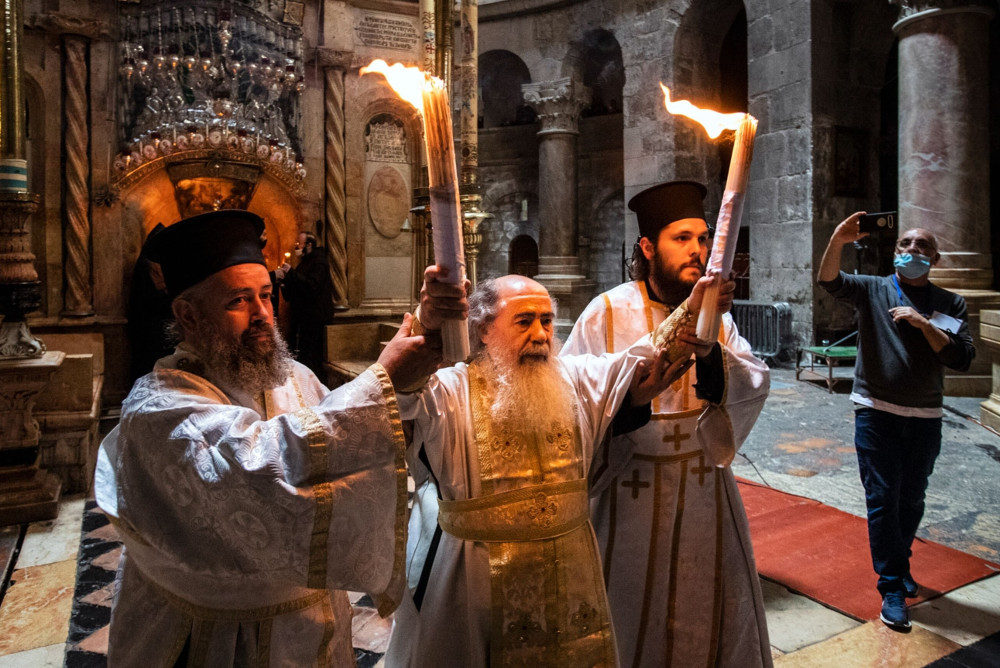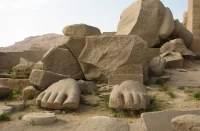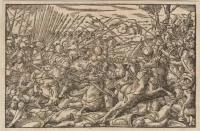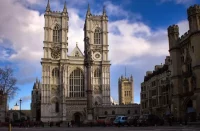A wise man once said, “What we believe always remains intellectually possible; it never becomes intellectually compulsive. I have an idea that when this ceases to be so, the world will be ending.” That is, in this age we walk by faith, not by sight. By God’s design and providence, the world contains no proof that could compel belief by force, nothing that would “prove” the truth of Christianity so that faith was no longer necessary to discipleship. Scientific facts can be proven in a lab: for example, if you add fire to gunpowder, this produces an explosion. That is not a hypothesis or a theory; it may be considered a fact. Faith in the explosive result of combining fire and gunpowder is not required. All that is required is that you watch for yourself what happens (presumably from a safe distance). The truth of Christianity is not a fact like this. Faith is still and always will be required. That is one of the reasons faith will be rewarded on the Last Day.
That said, the annual miracle of the Holy Fire in Jerusalem does come rather close to proof. For about 1200 years (since Jerusalem fell to Islam, and Christians there needed some divine encouragement) every year at the eve of Pascha a fire is supernaturally kindled in the Church of the Holy Sepulchre. The Patriarch enters the edicule, the Tomb of Christ, with a bunch of unlit candles, kneels down, says a prayer, and then the candles are supernaturally lit. He emerges from the Tomb and shares the light with others. At that time, some candles held by the faithful throughout the church are spontaneously lit before their eyes, even before the fire from the Tomb reaches them. This is called “the holy fire”, and it has been occurring faithfully for centuries. Orthodox take it for granted as a sign of the abiding presence of the risen Christ.
Non-Orthodox have been (shall be say) rather more sceptical of the supernatural origin of the fire. For them the fire is not supernatural at all, but is lit every year by the Patriarch behind the closed doors, presumably after he smuggled a BIC lighter into the Tomb undetected.
Throughout the years, scepticism has reigned, especially in some Protestant quarters. One English visitor to Jerusalem, John Kelman, wrote in about 1912 that in the Church of the Holy Sepulchre, “on Easter Eve, the sham miracle of the ‘Holy fire’ has been enacted annually for at least a thousand years”. For him, it was a symbol of the light of Christ, not a miracle. Rather later, another Englishman, H.V. Morton, wrote the same thing, only more entertainingly: “The crowds have been told time and again that the Holy Fire is a piece of symbolism, but nothing will shake their belief that on this day it descends from heaven into the Tomb of Christ…I thought what an extraordinary thing it was that a frenzied ceremony that might have occurred in a grove of Adonis should have taken place at the Tomb of Christ” (from his In the Steps of the Master, 1934). A little later still, yet another Englishman, the Methodist military chaplain Leslie Farmer, wrote after witnessing it that “the superstitious believe that the appearance of this fire is a yearly miracle from heaven. There was a miracle. It was that no conflagration was caused. I stood in my sheltered corner and gazed fearfully at the scene, expecting catastrophe at any moment” (from his We Saw the Holy City, 1944).
 What is strange is that both Morton and Farmer admitted that they saw people passing the newly-kindled fire over their faces, beards, and clothes without being burned, but they offered no explanation for why this was. Surely such a thing cries out for some comment? For the fire was not passed so quickly as not to burn, but was held in place long enough to catch hair and clothes on fire, if it was a normal fire. Film footage of this can be seen here.
What is strange is that both Morton and Farmer admitted that they saw people passing the newly-kindled fire over their faces, beards, and clothes without being burned, but they offered no explanation for why this was. Surely such a thing cries out for some comment? For the fire was not passed so quickly as not to burn, but was held in place long enough to catch hair and clothes on fire, if it was a normal fire. Film footage of this can be seen here.
We note too that, for all Morton saying that the crowds were told time and again that it was just a bit of liturgical symbolism and not a miracle, a recent Patriarch said precisely the opposite. That is, he insists that he experiences a miracle every year and did not kindle the fire.
One person asked the Patriarch about what actually happened in the Tomb. The Patriarch replied: “I find my way through the darkness towards the inner chamber in which I fall on my knees. Here I say certain prayers that have been handed down to us through the centuries, and having said them, I wait. Sometimes I may wait a few minutes, but normally the miracle happens immediately after I have said the prayers. From the core of the very stone on which Jesus lay an indefinable light pours forth. It usually has a blue tint, but the colour may change and take many different hues. It cannot be described in human terms. The light rises out of the stone as mist may rise out of a lake; it almost looks as if the stone is covered by a moist cloud, but it is light. This light each year behaves differently. Sometimes it covers just the stone, while other times it gives light to the whole sepulchre so that people who stand outside the tomb and look into it will see it filled with light. The light does not burn. I have never had my beard burnt in all the sixteen yers I have been Patriarch in Jerusalem and have received the Holy Fire. The light is of a different consistency than a normal fire that burns in an oil lamp. At a certain point the light rises and forms a column in which the fire is of a different nature, so that I am able to light my candles from it. When I thus have received the flame on my candles, I go out and give the fire first to the Armenian Patriarch, and then to the Coptic. Then I give the flame to all people present in Church.”
In other words, the sceptics ask us to believe that the Patriarch is a liar, as have been all his predecessors in that office for the past 1200 years. That would be a miracle harder to believe than that of the Holy Fire itself. Surely in all that time someone would have blown the gaff and let out the secret of the hoax? (One also wonders how his predecessors pulled it off hundreds of years ago without the aid of BIC lighters.) And one wonders too about the hundreds and thousands of worshippers who have testified that their own candles were supernaturally lit at that time.
For all that, we of course still walk by faith, and the Holy Fire is given to comfort and encourage believers, not to convert sceptics. We have our Lord’s own testimony that no miracle could do that, even the miracle of someone rising from the dead (Luke 16:31). But I would like to leave the reader with two questions. Why is it that other religions can offer nothing as compelling as the Holy Fire and that this is found in Christianity alone? And why it is that the Holy Fire occurs only in the Orthodox Church?
Source: No Other Foundation














Comments